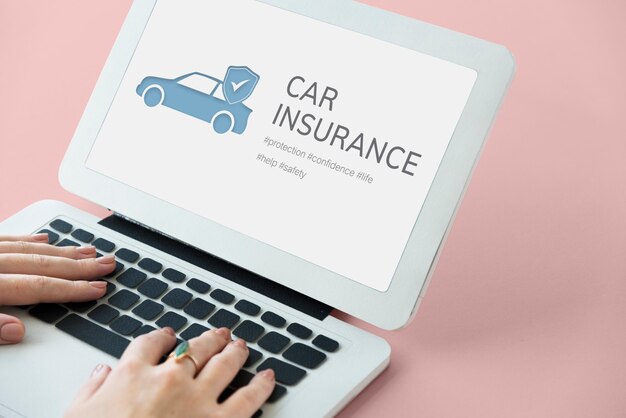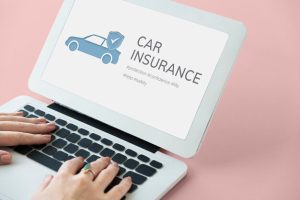
A Complete Guide to Understanding Car Insurance Coverage
When was the last time you reviewed your car insurance policy? Whether you’re a new driver or a seasoned one, understanding your car insurance coverage can seem like trying to decode an ancient language. But don’t worry—this guide breaks it all down in simple terms, so you can make informed decisions and ensure you’re well-protected.

Table of Contents
| Sr# | Headings |
| 1 | Introduction to Car Insurance |
| 2 | Why Car Insurance Matters |
| 3 | Types of Car Insurance Coverage |
| 4 | Liability Insurance |
| 5 | Collision Coverage |
| 6 | Comprehensive Coverage |
| 7 | Uninsured/Underinsured Motorist Coverage |
| 8 | Medical Payments Coverage |
| 9 | Personal Injury Protection (PIP) |
| 10 | Additional Coverage Options |
| 11 | Factors That Influence Premiums |
| 12 | How to Choose the Right Coverage |
| 13 | Common Car Insurance Mistakes |
| 14 | Steps to File a Claim |
| 15 | Conclusion: Drive Smart, Stay Protected |
Introduction to Car Insurance
Picture this: You’re driving on a scenic road when suddenly, an unexpected accident occurs. Without insurance, you could face overwhelming repair costs, medical bills, and legal troubles. Car insurance is your financial safety net, protecting you from such risks. But how does it work, and what do you actually need?
Why Car Insurance Matters
Think of car insurance as a protective umbrella for your wallet and peace of mind. Accidents can happen even to the most careful drivers. Car insurance ensures you’re not left shouldering hefty costs or legal headaches alone. Plus, it’s legally required in most places!
Types of Car Insurance Coverage
Understanding the different types of car insurance is key to picking the right policy. Let’s explore the options:
Liability Insurance
Liability insurance is a vital safety net that protects individuals and businesses from financial loss in the event of lawsuits or claims for damages caused to others. It provides coverage for legal defense costs and compensation payments, ensuring you are not personally or financially devastated by unforeseen incidents. Here’s a comprehensive look at liability insurance, its types, benefits, and why it’s crucial.
Collision Coverage
Collision Coverage is an essential part of auto insurance that helps pay for damages to your vehicle resulting from a collision with another vehicle or object, such as a tree, guardrail, or fence. This coverage typically kicks in regardless of who is at fault in the accident.
Key Points of Collision Coverage:
- Accident Protection: It covers the cost of repairing or replacing your car after an accident, even if you are at fault.
- Deductible: Collision coverage typically comes with a deductible, which is the amount you must pay out-of-pocket before the insurance kicks in. The higher the deductible, the lower the premium, and vice versa.
- Optional but Recommended: While it is not legally required in most states, collision coverage is often recommended, especially for those who own newer or more valuable vehicles.
- Not for Non-Collision Incidents: It does not cover damages from incidents like vandalism, theft, or weather-related damage (e.g., hail or flooding). These types of damages are covered under other parts of your car insurance, such as comprehensive coverage.
- Impact on Premiums: Adding collision coverage to your policy will increase your monthly premium. However, for drivers with newer or more expensive cars, the protection may outweigh the extra cost.
Why You Might Need Collision Coverage:
- Newer Cars: If your car is still under financing or lease, collision coverage is often required by the lender or leasing company.
- Accident Risk: If you live in a busy area with heavy traffic or high accident rates, this coverage can provide peace of mind.
- Protection Against High Repair Costs: Collision repairs can be expensive, and having collision coverage helps ensure you don’t have to pay out-of-pocket for major repairs or vehicle replacement.
How It Works:
- After an accident, you’ll file a claim with your insurance company. They will assess the damage, and after applying your deductible, they will pay for the repairs or replacement of your car, up to its actual cash value (ACV).
Comprehensive Coverage
Comprehensive coverage helps pay for damages to your vehicle that are not caused by a collision. This can include:
- Theft
- Vandalism
- Natural disasters (e.g., hail, floods, earthquakes)
- Animal collisions (e.g., hitting a deer)
This coverage is typically optional, but may be required if you have a car loan or lease. It provides peace of mind by covering damages that aren’t related to accidents on the road.
Uninsured/Underinsured Motorist Coverage
This coverage protects you if you’re in an accident caused by a driver who either has no insurance or insufficient insurance to cover the damages. There are two components:
- Uninsured Motorist Coverage: Covers your medical expenses, lost wages, and pain and suffering if you’re hit by a driver who doesn’t have insurance.
- Underinsured Motorist Coverage: Covers the difference if the at-fault driver’s insurance is insufficient to cover all your costs.
In some states, uninsured/underinsured motorist coverage is mandatory, while in others, it’s optional. It’s especially important if you’re in an area where uninsured drivers are common.
Medical Payments Coverage
Medical payments (MedPay) coverage helps pay for medical expenses for you and your passengers after an accident, regardless of who is at fault. This may include:
- Hospital bills
- Doctor visits
- Surgery
- Ambulance fees
- Rehabilitation
MedPay is often an optional coverage, but it can be very beneficial in case of an injury, especially if you have a high deductible or limited health insurance.
Personal Injury Protection (PIP)
Personal Injury Protection (PIP) is similar to medical payments coverage but with broader protection. It helps cover medical costs and other expenses that arise after a car accident, including:
- Medical expenses
- Lost wages
- Childcare or household help if you’re unable to perform those duties due to injuries
PIP is mandatory in some states (no-fault states) and optional in others. It provides additional financial support, particularly for those who don’t have health insurance or if their health plan doesn’t cover car accident-related expenses.
Additional Coverage Options
Sometimes basic isn’t enough. Consider extras like:
- Roadside Assistance: For towing, flat tires, or jump-starts.
- Rental Car Reimbursement: Covers the cost of a rental while your car is being repaired.
- Gap Insurance: Ideal for new cars, it covers the difference if your car’s value is less than what you owe on it.
Factors That Influence Premiums
Ever wondered why your premium is higher than your friend’s? Insurers consider:
- Your Driving Record: Accidents or tickets can raise rates.
- Car Make and Model: Luxury or sports cars cost more to insure.
- Location: Urban areas with higher accident rates lead to higher premiums.
- Credit Score: A better score often means lower rates.
How to Choose the Right Coverage
Choosing the right policy doesn’t have to be overwhelming. Start by assessing your:
- Budget: What can you afford monthly?
- Driving Habits: Do you drive daily or occasionally?
- Risk Tolerance: Are you comfortable with higher deductibles to save on premiums?
Common Car Insurance Mistakes
Avoid these pitfalls:
- Choosing the Cheapest Option: It might leave you underinsured.
- Not Updating Your Policy: Life changes, like moving or buying a new car, can affect coverage.
- Ignoring Discounts: Many insurers offer savings for bundling policies or safe driving.
Steps to File a Claim
When the unexpected happens, follow these steps:
- Document the Scene: Take photos and notes.
- Exchange Information: Get details from the other driver(s).
- Contact Your Insurer: Report the accident promptly.
- Provide Required Documents: Submit photos, police reports, and any relevant paperwork.
- Follow Up: Stay in touch with your insurer for updates.
Conclusion: Drive Smart, Stay Protected
Car insurance isn’t just a legal requirement—it’s your ticket to financial security and peace of mind. By understanding your options, you can tailor coverage to suit your needs and avoid common pitfalls. So, drive smart and stay protected!
FAQs
- What is the minimum car insurance coverage required?
The minimum coverage varies by state or country but typically includes liability insurance. Check local regulations to ensure compliance.
- How can I lower my car insurance premium?
You can lower premiums by maintaining a clean driving record, bundling policies, and choosing higher deductibles.
- What happens if I drive without insurance?
Driving without insurance can result in fines, license suspension, and personal liability for accident costs.
- Is comprehensive coverage necessary?
While not mandatory, comprehensive coverage is highly recommended for protecting against non-collision events like theft or natural disasters.
- Can I switch car insurance providers anytime?
Yes, you can switch providers at any time. Ensure there’s no gap in coverage when transitioning.




